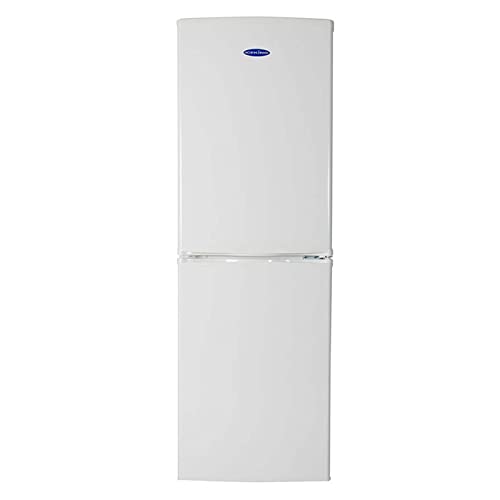This company has no active jobs
0 Review
Rate This Company ( No reviews yet )
About Us
The Top Refridgerator Gurus Are Doing Three Things
How to Choose a Refrigerator
Refrigerators (sometimes called fridges) are kitchen appliances that keep food and drinks cold. They are used at home as well as in hotels, offices and college dorm rooms.
 Certain refrigerators come with intelligent features, such as sensors and cameras. Some refrigerators have touchscreens that allow you to watch videos, search for recipes, view family calendars and shopping lists, or even write notes.
Certain refrigerators come with intelligent features, such as sensors and cameras. Some refrigerators have touchscreens that allow you to watch videos, search for recipes, view family calendars and shopping lists, or even write notes.
Temperature Control
A proper temperature in the refrigerator will ensure food safety and prevent the food from spoiling. This is particularly important with food such as eggs and milk which are susceptible to rotting at room temperature but remain stable at refrigerator levels. Refrigerators are also widely used to store pharmaceutical products like drugs and vaccines which lose effectiveness as time passes. Refrigerator monitoring systems are available to ensure that the medical facility or laboratory has an appropriate cold chain.
A refrigerator is equipped with an internal thermal insulation to keep its contents colder than the surrounding temperature. The heat pump moves warm air from the outside of the refrigerator into an insulated compartment, Www.frydge.uk from which it cools down. The refrigerator has a controlled system that activates the cooling system if its internal temperature exceeds a preset threshold. This prevents the formation of bacteria in the refrigerator.
Each zone of the fridge is designed to serve a particular purpose. The lower shelves are ideal for perishables such as fresh vegetables and meats that require the minimum temperature to preserve their texture and taste. Keeping the shelves clear allows cool air to circulate throughout the refrigerator. Store soft cheeses and cured items in a separate deli drawer to create the perfect charcuterie platter.
Some refrigerators have stainless steel or glass doors to safeguard the interior. They also make it easier to clean. Some refrigerators also include door alarms that can be programmed to notify you if the fridge or freezer doors are left open for too long. You can program them to alert multiple people, and in escalating levels based on your needs. You can set them to send temperature graphs by email or text.
The majority of refrigerators come with thermometers however for those that don’t, an independent appliance thermometer is a cost-effective way to check the temperature of your freezer and fridge. It is crucial to monitor the temperature of the fridge and freezer often, especially if there has been an electrical failure or you’ve manually changed the temperature setting. The ideal temperature for both the freezer and refrigerator is 40 degrees Fahrenheit.
Storage Capacity
The capacity of your refrigerator is an important factor in choosing the right model to meet your requirements. There are a variety of sizes available, from small models with a capacity less than 15 cubic foot to large models with a capacity over 26 cubic feet. Consider your family’s cooking style and the number of people living in your home to figure out the best size for you. For two people the average of between 11 and 13 cubic foot of refrigerator space is sufficient and 18 to 22, cubic feet is recommended.
Look at the depth of the fridge, in addition to the space. Some models are more shallow than others, which allows them to fit in tight spaces without taking up too much room under the counters. Cabinet-depth fridges are also an option. Their depth is comparable to the depth of a typical kitchen cabinet, but the handles can extend a bit further. These are a great choice for homes with limited counter space. They also appear more sleek.
Be sure to inquire about the refrigerator’s energy usage and noise level when you are shopping. Many manufacturers offer quieter refrigerators suitable for homes. Others offer refrigerators with lower electricity consumption than similar models. Take a look at the yellow Energy Guide label on appliances to find out about the typical energy usage for a specific model. Test the appliance by opening and shutting its doors.
The majority of modern refrigerators have the pantry drawer. It is a full-width compartment with separate temperature controls that can be used for storing a variety of objects. These drawers are especially useful to store party trays and wine, since they allow you to keep them at certain temperatures. They can be programmed to store wines or deli food items as well as soft drinks, depending on the model.
Energy Efficiency
Refrigerators consume a lot of energy. That’s why it’s crucial to choose one that is energy efficient. Over time, refrigerators have become increasingly energy-efficient. Insulation, motors, as well as magnetic door seals have been improved over time, which means that a modern refrigerator consumes less energy than an older one of the same size. You can cut down on the electricity consumption of your refrigerator even more by buying a model that is highly energy efficient. A refrigerator that is Energy Star rated will consume much less energy than a comparable model ten years old or older.
Energy efficiency is especially important for consumers with limited access to the grid for electricity. Refrigerators are usually among the most costly appliances for homes that are not connected to the grid, and their large energy consumption means they require huge solar home systems (SHS) that are not affordable for many families earning less than $2 a day. The annual energy consumption of a refrigerator is therefore an important factor in determining whether it is cost-effective for consumers to purchase and operate (PATH and WHO 2013; McCarney et al, 2012).
We’ll begin by explaining the basic refrigeration cycle. The refrigerator cools down by pushing refrigerant liquid through a sealed system. It begins as a liquid, and then goes through the compressor, which compresses it to form the form of a vapor. This vapor then flows into coils that are located on the outside of the fridge where it draws the heat from the fridge, settling down before turning back into a liquid. This process is repeated many times, keeping food cold while the vapor moves through the coils.
Refrigerators are still one of the most expensive appliances that consumers off-grid can purchase, but improving their energy efficiency can make them more affordable. By reducing the amount of energy they use it is possible for a refrigerator to be powered by a smaller SHS and reduce overall system costs for consumers. Depending on the dimensions, style, and features of the refrigerator, the energy savings will vary. Water dispensers and ice makers through the door, for example, add cost, but can increase the energy consumption of the refrigerator, which can increase the amount of SHS required to power it.
Maintenance
The lifespan of a refrigerator can be greatly increased by regular maintenance and inspection. This can be done by checking the condenser coils, the ice maker, the defrost drain, as well as the gasket seal on the door to ensure that it is in good working order. In addition, cleaning and changing water filters is essential. These simple tasks can aid in prolonging the life of your refrigerator and also save money on your energy bills.
The easiest and most effective refrigerator maintenance task is to clean the interior of your refrigerator on a regular basis. This means throwing away old food, wiping down shelves and crispers, walls and interior of your refrigerator’s doors. This can reduce the chance of contracting foodborne illness and unpleasant odors. It is recommended to check regularly the temperature of your refrigerator by using the help of a thermometer for your fridge. Unmaintained fridges are prone to temperature fluctuations which can result in food waste and higher electric bills.
The condenser coils of your refrigerator should be cleaned at least at least twice a year. This will eliminate any dirt, grime, hair or other debris that has built up. These coils, which are essentially radiators that help to remove heat from the refrigerator are located at the bottom or rear of the appliance. If they’re dirty, they can’t dissipate heat as efficiently, and your refrigerator will use more power to run.
Another thing to check frequently is the gasket on your refrigerator, which is designed to create an air-tight seal between the fridge and your home’s ductwork. This is crucial to ensure your fridge’s contents remain cold However, over time, the seal may wear down from greasy fingerprints, sticky syrups, and dripping drinks. To keep the gasket of your refrigerator in good shape, you should regularly wipe it down with an aqueous cloth.
Lastly, it is an ideal idea to clean the drip pan, which is normally situated under the compressor unit. The drip pan is responsible to collect the water that is drained from the refrigerator’s defrost process. It should be cleaned regularly to avoid the development of mold and unpleasant smells.
